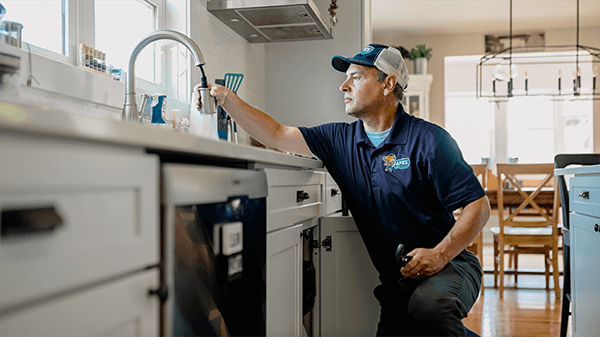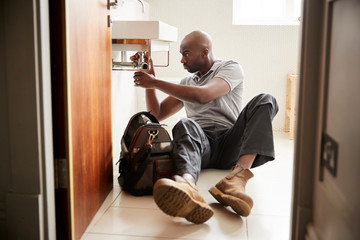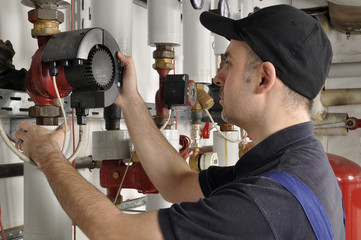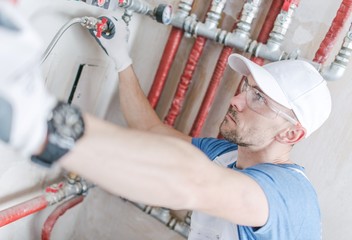Water Pipe Repair Saves Money by Preventing Water Damage to Homes and Appliances
Water pipe repair involves identifying and fixing leaky pipes. This saves money by avoiding water damage to homes and appliances.
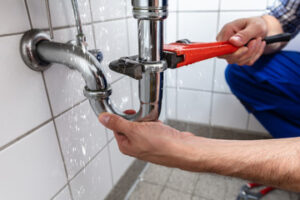
Shut off the water supply to the damaged pipe by turning off the valve located near the location of the leak. Then, use a pipe repair clamp to temporarily stop the leak. However, if you need some professional help, you can contact Woodlands Plumbing.
Unless you have extensive plumbing skills and feel comfortable cutting and soldering copper pipe with a torch, it’s best to leave the job of repairing or replacing your water line to the professionals. The main water line is what brings all your fresh drinking water into your home, so it’s not something you want to mess with on your own. Plus, many towns and cities have regulations that prohibit homeowners from touching their water lines without the proper permits and professional expertise.
Whenever you’re experiencing a leak from the service line, it’s important to find your water shutoff valve. This is usually located in an easily accessible place like the garage, basement, or crawl space. Once you’ve found it, turn the handle counterclockwise to shut off your water supply. Then flush all your toilets and open all the faucets in your home to drain as much water from the pipes as possible.
If you’re unsure where the leak is coming from, it’s recommended that you run a sightline from your water meter to the point at which your pipe connects with the mainline. This will help you locate the area where the underground pipe has softened or weakened and where your pipe is most likely to burst. You’ll also want to make sure that you have latex or nitrile gloves for protection.
Once you’ve determined the exact location of your leak, you’ll need to find a suitable solution that will get the problem under control until a plumber can come out. One option is to use fiberglass tape to seal the leak, though this is only a temporary fix until you can call a plumber.
Another quick and easy fix for small leaks is to use a waterproof epoxy stick. These are available at most hardware stores and can be applied with a putty knife. Just be sure to clean the area thoroughly and allow the epoxy to dry completely before turning the water back on.
If you can prove that your break was caused by someone else, such as a utility company, you may be able to file a claim for the cost of the repair. However, this is only an option if you have the right insurance coverage in place.
Patch Clamps
Pipe repair clamps work on pipes of all kinds, including steel, copper, and asbestos cement. They seal leaks with an adhesive that dries hard and is durable. You can find them at hardware stores and some big box stores. They’re easy to use and a good temporary fix until you can get in touch with a plumber for a permanent solution.
A common type of water pipe repair involves applying a thick layer of epoxy putty over the surface of the burst or cracked area of the pipe. This will form a solid seal and prevent further leaks, but it is not as strong or lasting as replacing the broken section of pipe. This fix is also only suitable for small leaks located close to a joint or a crack in a pipe.
For larger leaks, you’ll need to remove the old pipe and replace it with a new one. This requires some plumbing expertise, but it’s not a difficult DIY job for anyone who has basic plumbing knowledge. You’ll need to cut out the old pipe and make sure that you have a proper fit for the replacement piece. You’ll also need to sand the ends of the replacement pipe and apply PVC cement to create a watertight seal.
Another type of DIY pipe repair is a moisture-cured urethane fiberglass wrap with an epoxy stick. This is a quick, simple, and effective method of stopping small leaks in pipes, but it’s only recommended for leaks below 50 psi. It’s important to note that the MCU wrap is only a temporary solution and will not be able to protect against corrosion or other problems.
Other types of temporary fixes include pipe tape, patch and clamp combinations, and epoxy putty. All of these products are available at hardware and big-box stores and can be used on straight lengths of pipe as well as joints. When using any of these tools, be sure to turn off your home’s water supply and wear latex or nitrile gloves to avoid getting wet. Once your pipe fix is complete, be sure to turn the water back on slowly and inspect your work for any signs of a leak or damage. If you spot any further leaks or think your pipe repair isn’t working, call a professional like ServiceMaster by Zaba for assistance.
Slip Couplings
When it comes to pipe repairs, you can’t always wait for a plumber to show up. If you find a water leak, it’s important to take steps to prevent further damage and minimize costly repair bills for floors, walls, ceilings, and other parts of your home or building. A few simple and inexpensive tools can help you do just that. A moisture-cured urethane fiberglass wrap and fast-cure epoxy stick can provide temporary solutions to stop the leak until you can get the problem fixed by a professional.
The first step in the process is to shut off the main water supply line. Locate the main valve near your meter or on an outside wall and turn it off. This will help reduce the pressure on your existing pipes and prevent water from escaping when you make the repair. Next, open up faucets and sinks so that the remaining water can drain. This will relieve the pressure and help mitigate any water damage or mold buildup in cabinets, closets, and other areas of your home or office.
After the pipe is drained, you can begin to make your temporary pipe repair. Start by using a pipe cutter to cut off the damaged area of the pipe. Then, use a coupling of the same size to connect the ends of your pipe together. This can be done with a wrench and soldering, or there are couplings that simply screw or snap into place, like SharkBite fittings or rubber pipe connectors.
Couplings that can be inserted into either end of the pipe are called slip couplings. They can be threaded or socket-weld designs, depending on what size your existing pipe is. If you are connecting pipes of different sizes, there are couplings available to do this as well. Couplings with a socket weld design have one end that can be welded to the existing pipe, while threaded couplings have both ends with threads for connection to other pipe.
If you’re planning to replace the old piece of pipe, make sure the new piece is the same size as your existing pipe by measuring the length. This way, you can be sure that the replacement is a perfect fit and will not cause problems with your existing system. When you have the replacement ready, remove the old coupling and use a wrench to tighten the new coupling in place. After a couple of minutes, you can turn the water back on and check to see if the leak has stopped or if it is continuing.
Pipe Sizing
The pipes that connect your home to the water supply and sewage system are sized to deliver the proper amount of water at the right pressure. The pipe size is determined by using a standard water pipe sizing chart. This chart helps builders choose a water pipe that will be able to handle the flow of water to each fixture and appliance in the house.
When determining what size pipe is needed, the builder must consider water pressure factors as well as the building structure and its use of fixtures. The water pipe sizing chart is an important tool for a water line repair, as it ensures that the pipes will not be overloaded or undersized.
A water pipe repair is most commonly made from PVC, CPVC, or copper. While polyvinyl chloride piping is inexpensive and easy to work with, it does not stand up well to sunlight and must be carefully stored or covered to prevent degrading. Copper pipes are much more expensive, but they are corrosion-resistant and have an excellent record of standing up to high temperatures and pressures.
Choosing the proper pipe size is an important consideration in any construction project. The choice of the right pipe can have a major impact on the cost of the project as well as the efficiency and longevity of the pipes themselves. While there are several different formulas for sizing pipes, the basic idea is to choose a pipe size that will allow for the maximum possible flow while maintaining adequate pressure at each fixture in the home.
One common method of sizing pipes is to determine the maximum pressure drop over 100 feet. This measurement is based on the D’Arcy equation and allows engineers to select a pipe that will be able to withstand the maximum pressure at the fixture entrance without causing unacceptable pressure drops along the entire length of the line.

